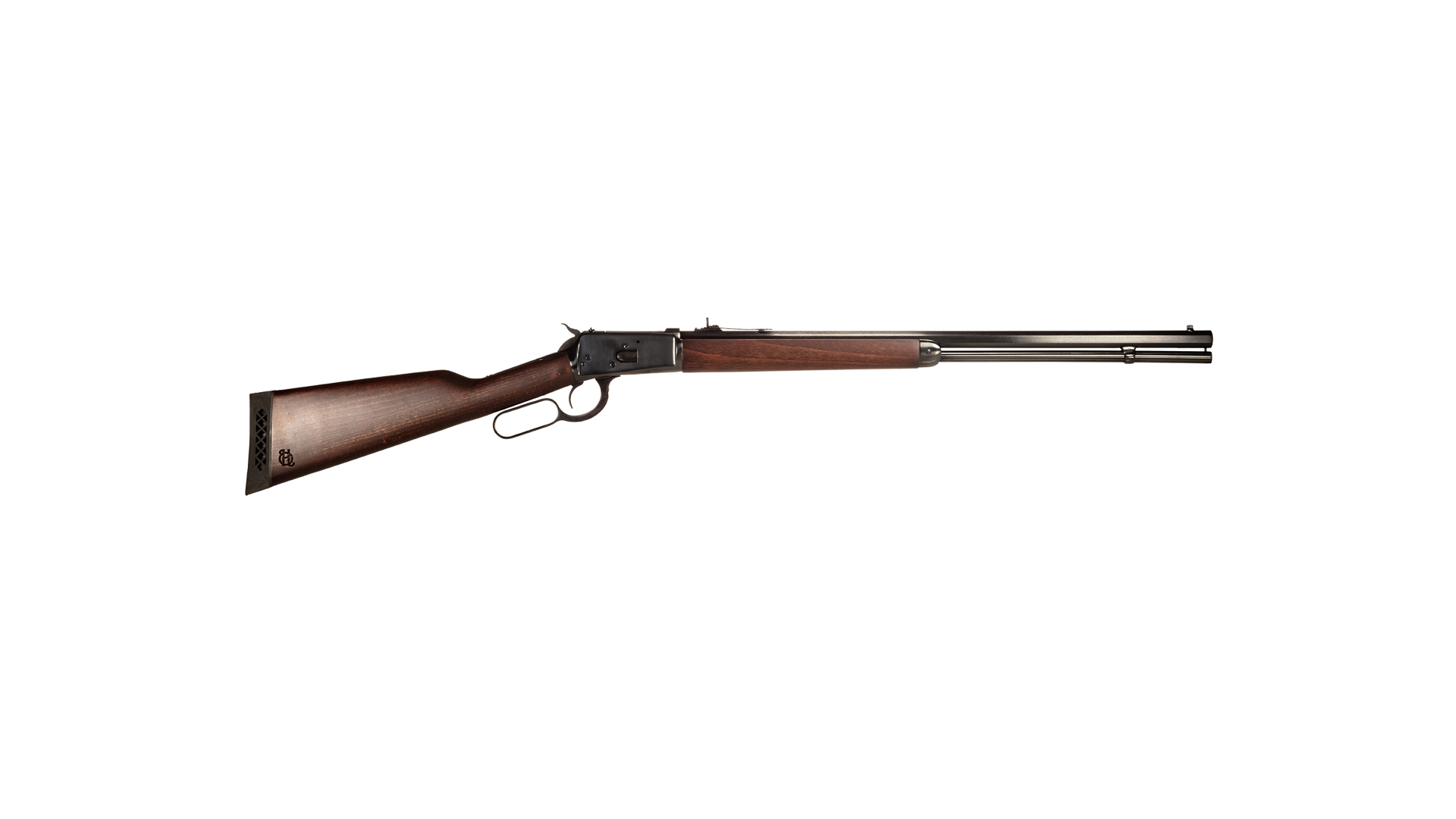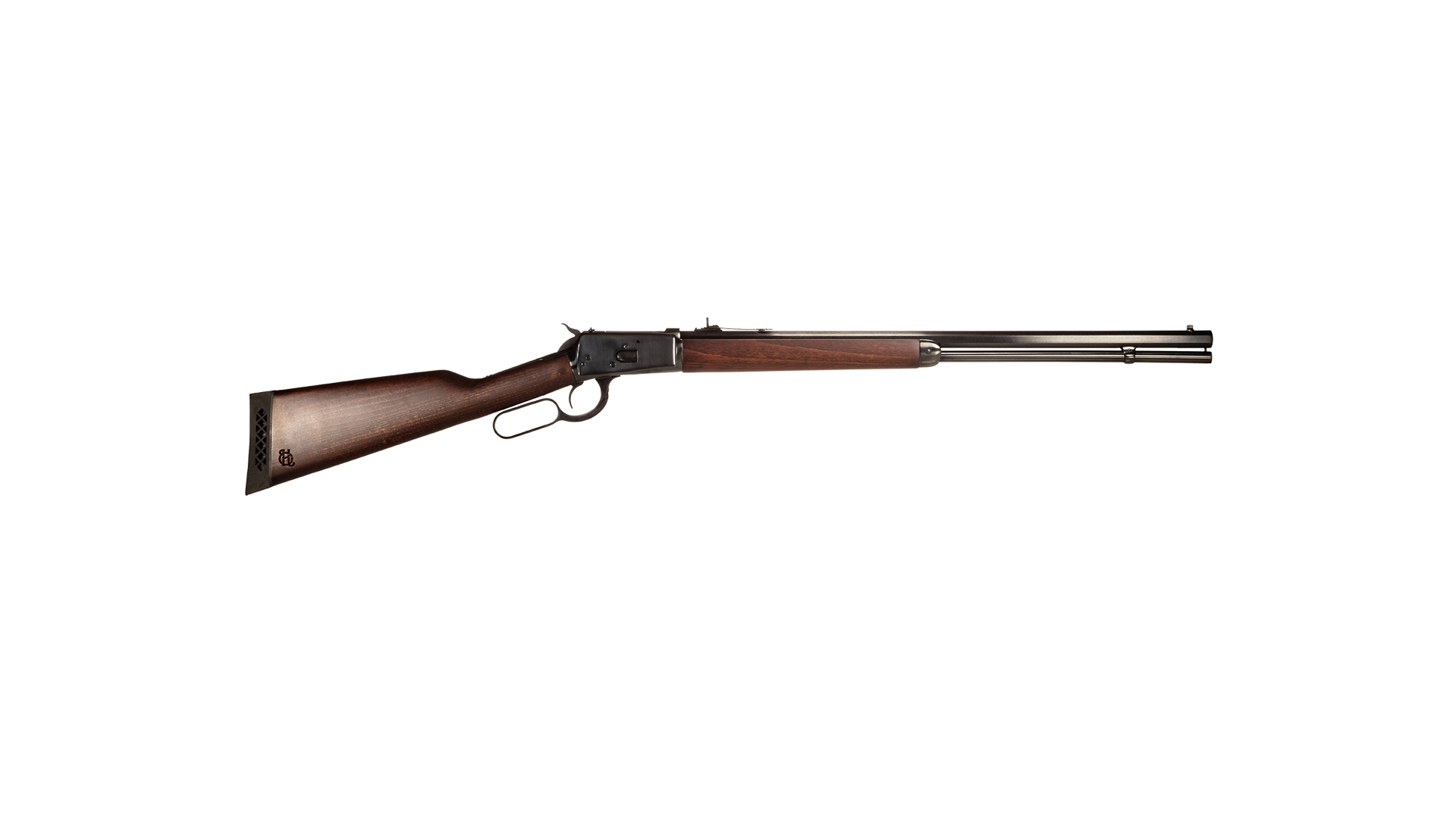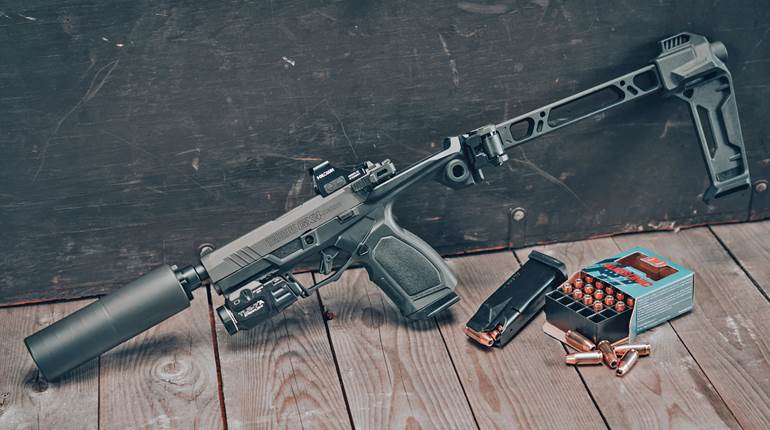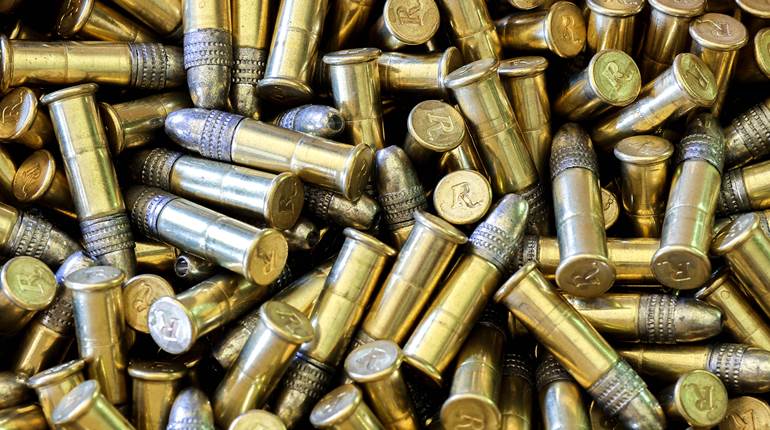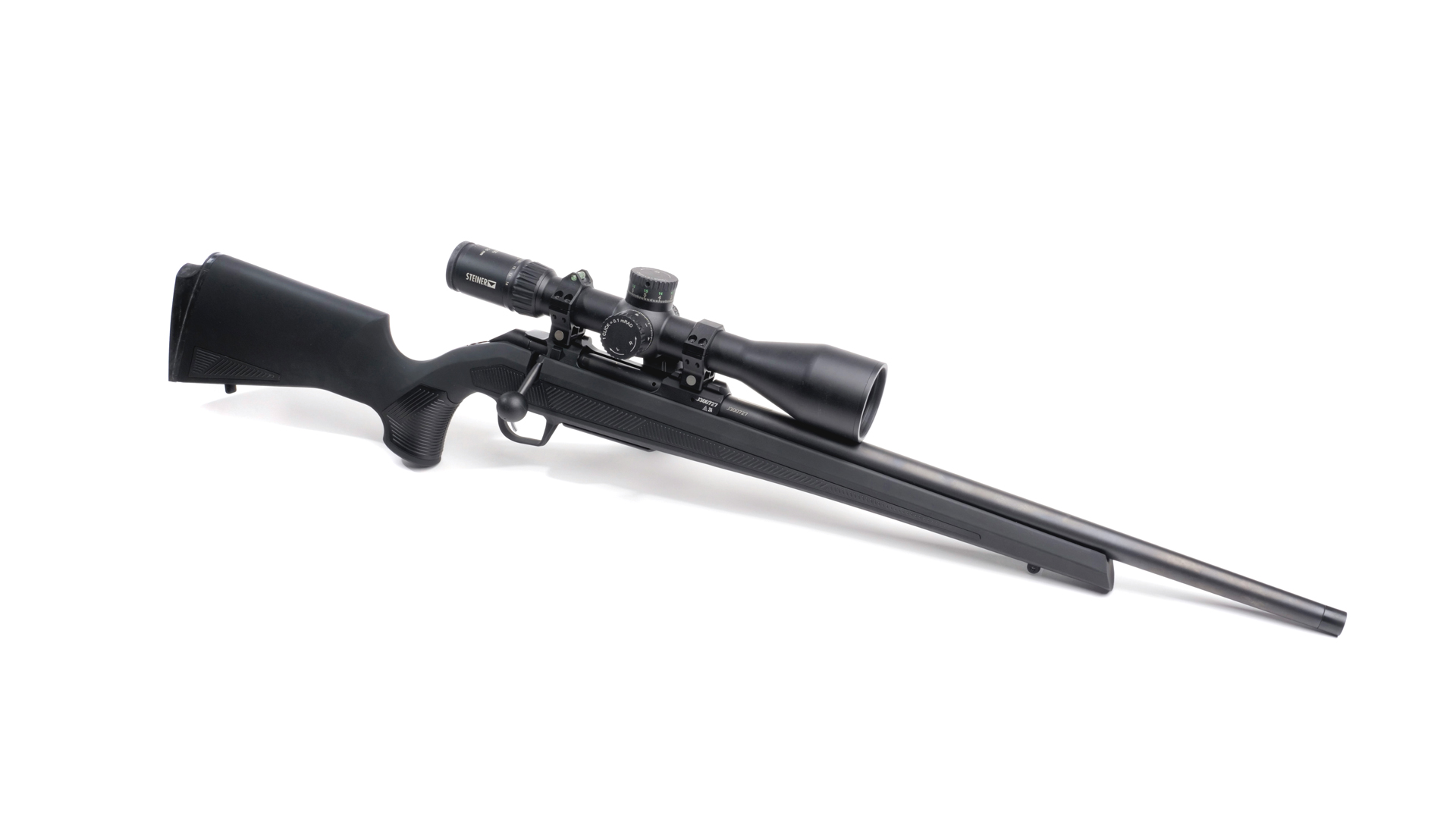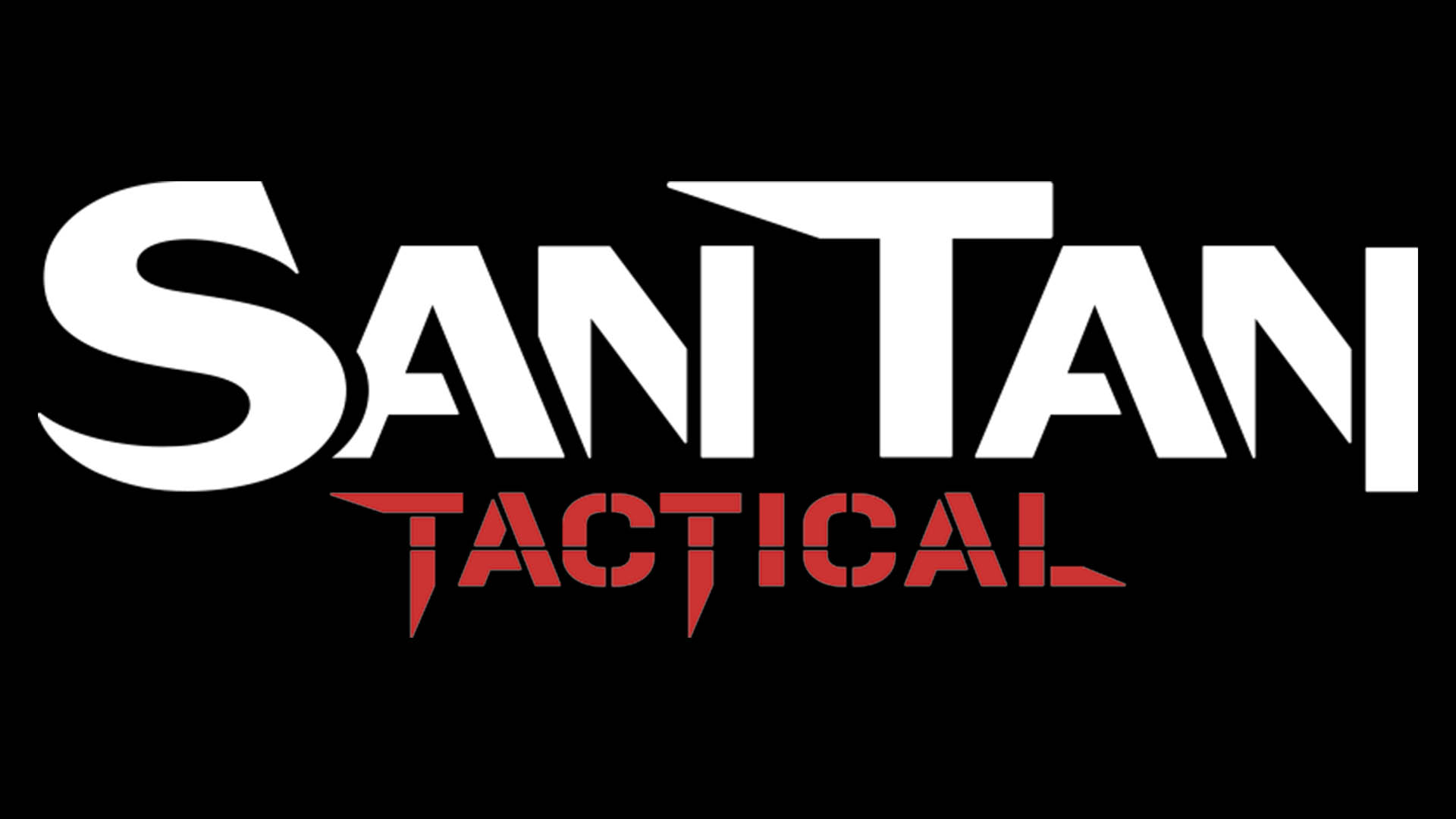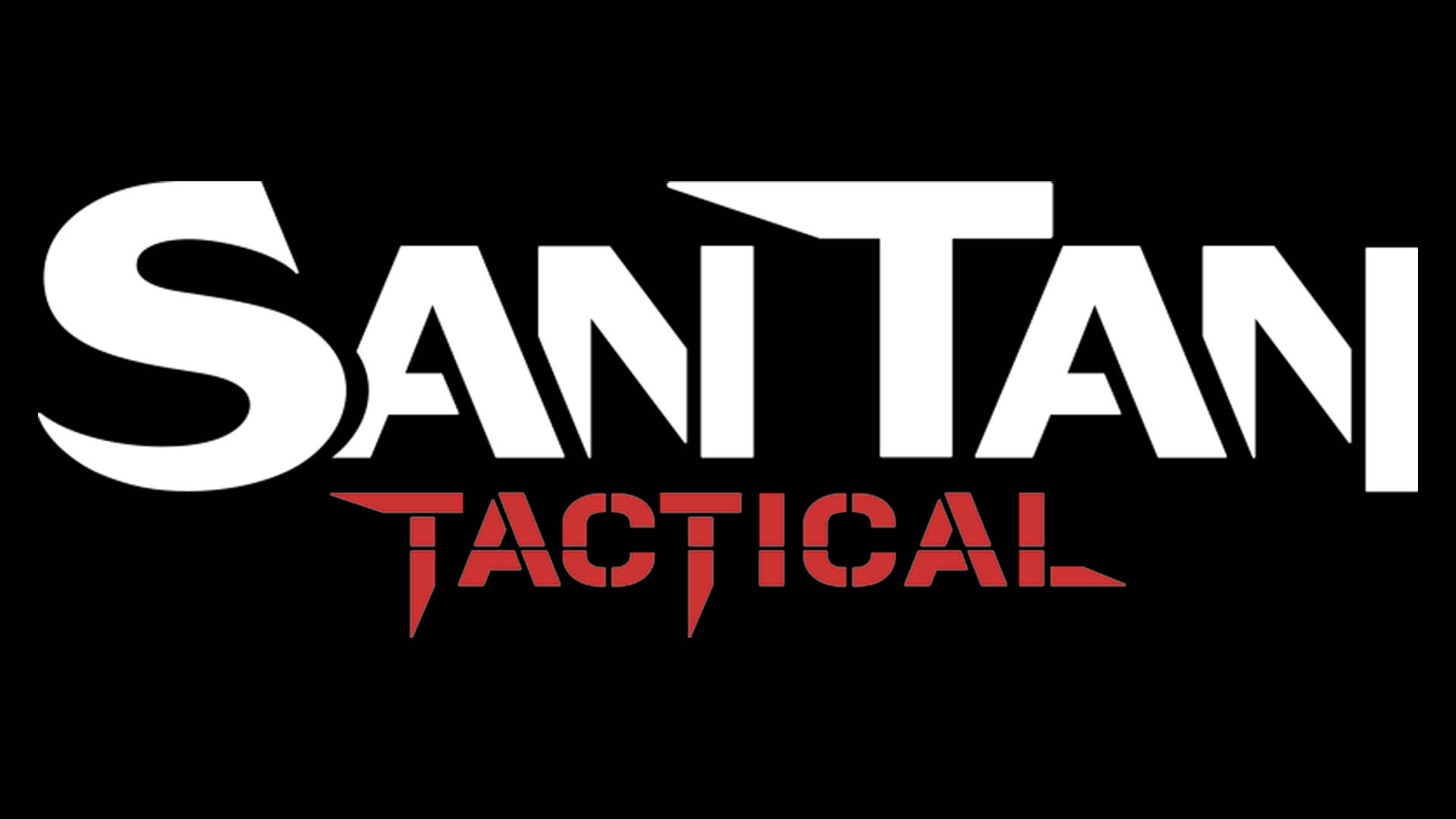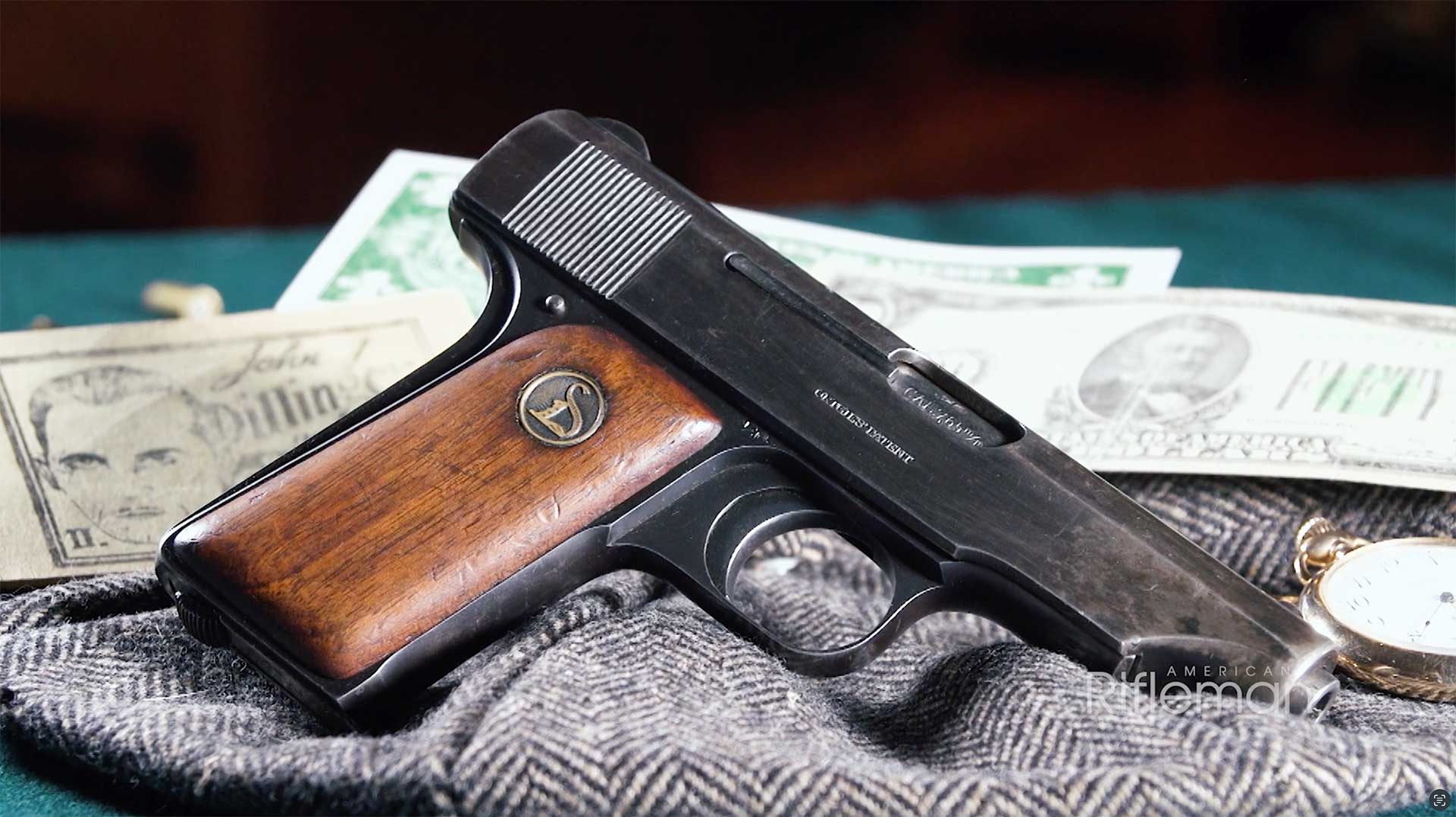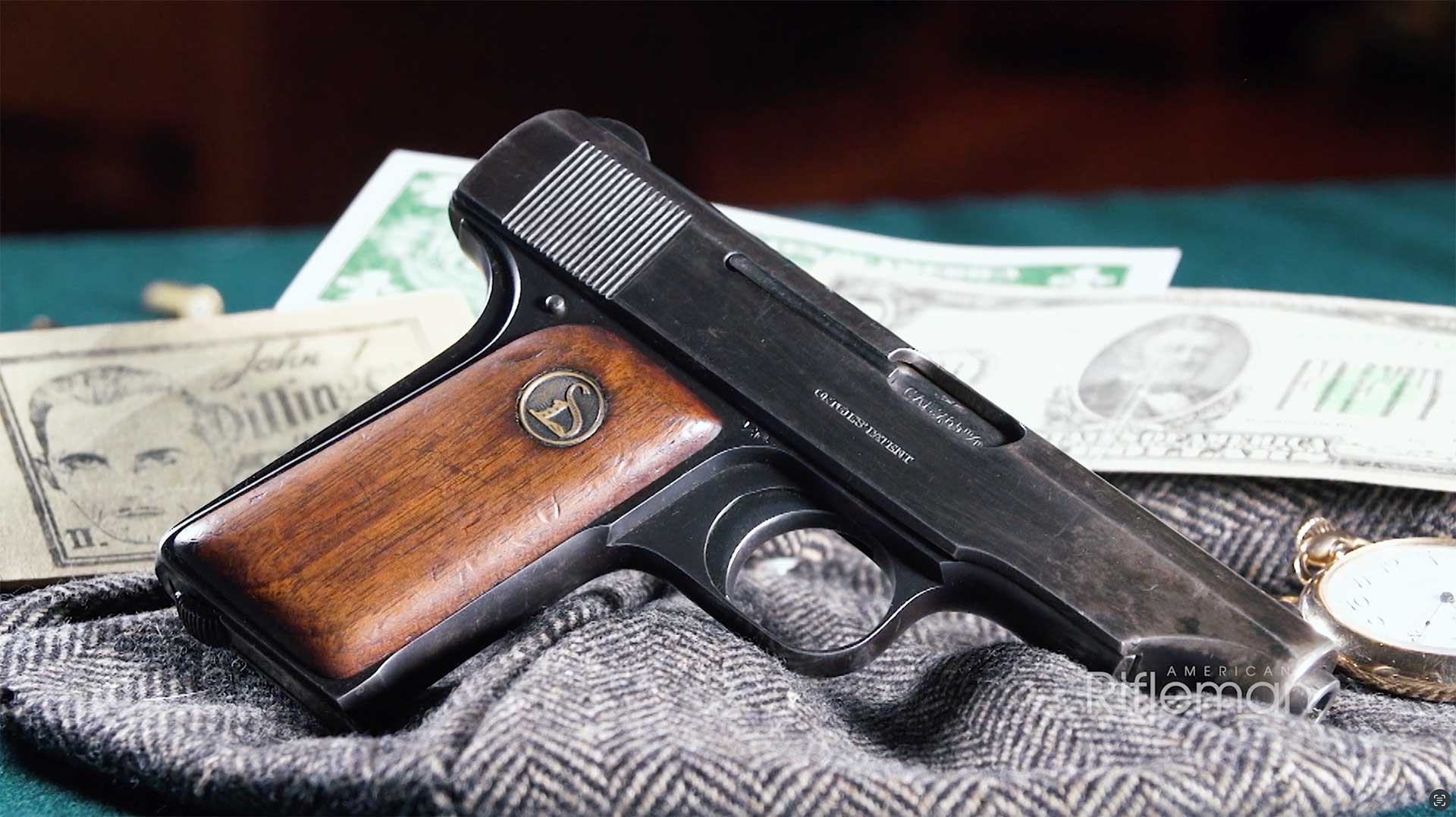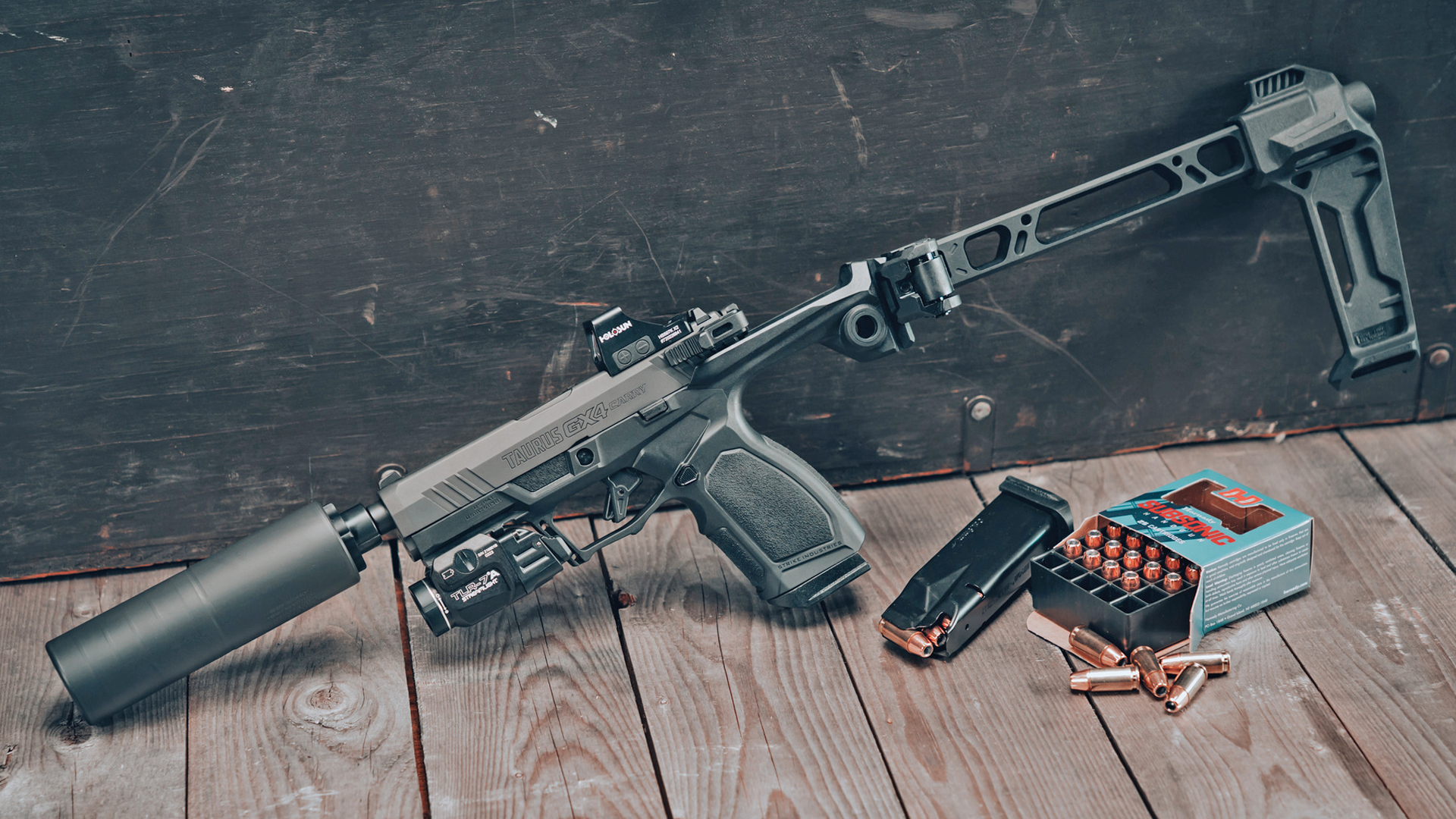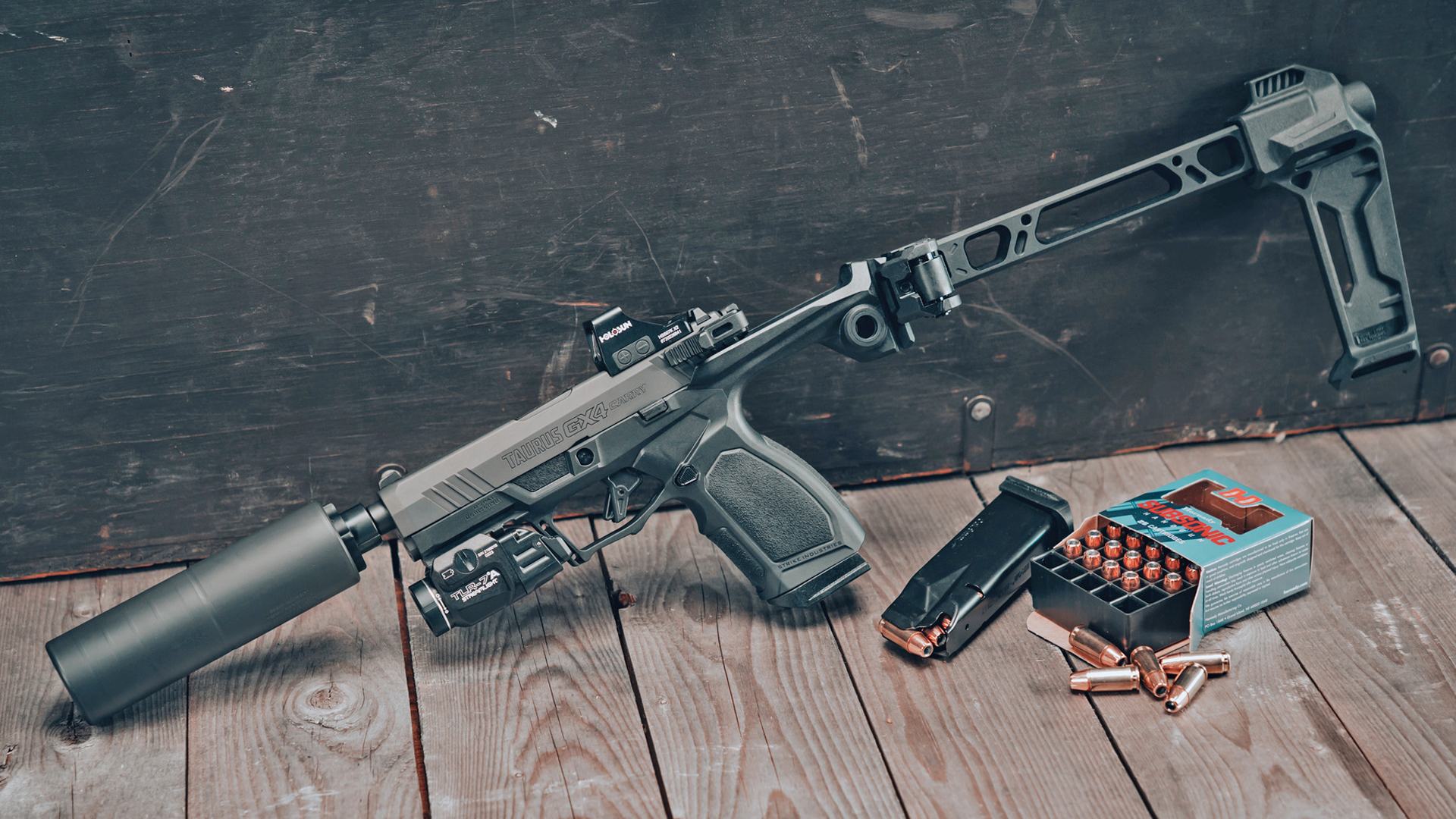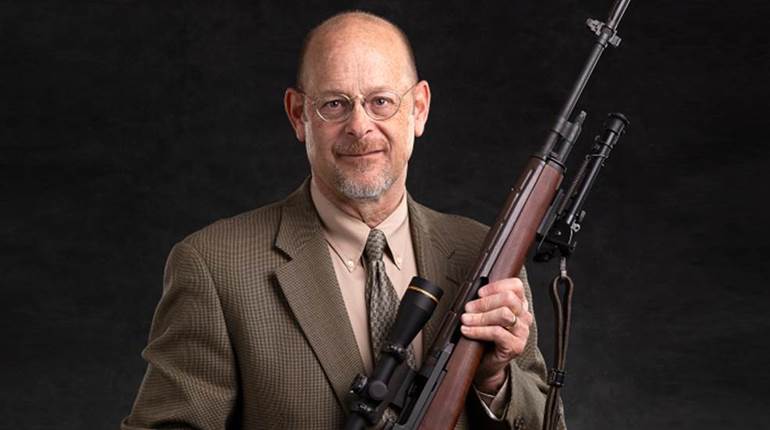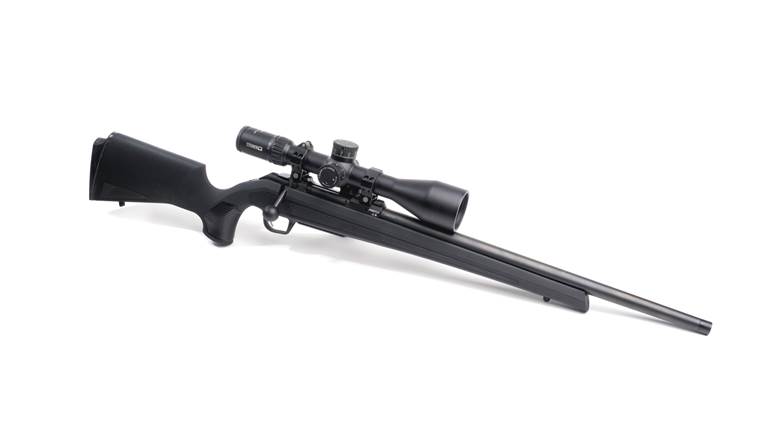
A .22-cal. rimfire rifle is the perfect way to start a youngster down the path of a lifetime of safe and responsible use of firearms. Over the years, many manufacturers have built .22-cal. rifles scaled to the stature of a young marksman. Once known by the misnomer of "boys' rifles," we now know that girls are equally adept at marksmanship and have just as much interest in firearms, in effect doubling the market for beginner .22-cal rifles, and manufacturers have answered this demand.

Depending on the age and physical size of a youngster, there are many great choices for a first .22-cal rifle in a variety of action types. In this article, we will focus on the smallest of the small. This category, now known as "micro-rimfires" includes rifles that weigh under 3 lbs. and are around 30” in overall length. For our testing, we selected three single-shot bolt actions that fit that description - the Henry Mini-Bolt, Keystone Crickett, and Savage Rascal.
Henry Repeating Arms Mini-Bolt Youth
The Henry Repeating Arms got its start with .22-cal. rimfires. Though the companys production line has expanded to include centerfire calibers, .22-cal. is still their bread and butter. They come in lever action, single shot, pump and semi-automatic form. A Henry Golden Boy lever action has been many child's first .22-cal. and even the Henry Survival Rifle makes a nice lightweight beginner firearm. But the company's Mini-Bolt Youth is tailored specifically to the young sharpshooter.

Constructed out of stainless steel with a synthetic stock, the single-shot, bolt action Mini-Bolt has a 16.25" barrel, a weight just under 3 lbs., a length-of-pull of 11.63" and an overall length just over 30". Stocks come in black, "instant orange," or a Muddy Girl camo pattern. All models are chambered for .22 LR, are right-handed and have a suggested retail price of $295. The Mini-Bolt has a "butterknife" bolt handle that passes through the rear-split bridge of the receiver.
With the Mini-Bolt, once a cartridge is loaded into the chamber the firing pin must be manually cocked. A manual thumb safety that sits at the left-rear of the receiver can be applied while operating the action, if it is not cocked. Once the firing pin is cocked it must be released to open the action. This means holding the cocking knob while pulling the trigger and easing the firing pin forward.

The sights supplied on the Mini-Bolt are Williams Fire Sights. The rear open notch is adjustable for windage and elevation and features two green fiber-optic dots. The front post has a red fiber-optic dot. A scope mount is offered for the rifle. Due to the split-bridge receiver, it mounts to a pair of pre-drilled holes on the barrel and cantilevers back over the action.
Keystone Sporting Arms Crickett and Chipmunk
Keystone Sporting Arms produces two of the oldest and most well-known contemporary youth rifles. In 1982, Oregon Arms introduced the Chipmunk .22-cal., a rifle that launched the modern micro-rimfire market and was heralded in magazine headlines as the "Rebirth of the Boys' Rifle." Keystone Sporting Arms began producing the competing Crickett rifle in 1996.
In 2007, Keystone purchased the Chipmunk design. Manufacturing both designs under one roof has allowed Keystone to offer the widest variety of options in the micro-rimfire market with dozens of possible combinations. Keystone's line-up starts with the basic Gen 1 blued with synthetic stock Crickett, which retails for $159. The Gen 2 Crickett adds sling swivels studs and an "EZ Load" ramp, with prices starting at $189. Crickett models are available with either a blued steel or stainless steel barrel and action.

Synthetic stocks come in five basic colors, or nine multi-color hydro dipped finishes. A spacer kit is available to add additional length-of-pull on synthetic stock models as a youngster grows. Solid walnut and laminate wood stocks, as well as thumbhole laminate stocks, are also available. Other options include bull barrels and threaded muzzles. To top it off, the Crickett is also offered as a "Precision Rifle" package, which uses an AI-style stock, heavy barrel with muzzle brake and comes supplied with a scope and bipod. Most Crickett models are available in either .22 LR or .22 Mag. chamberings.
Chipmunk rifles differ from the Crickett mainly by using metal as the material for the cocking piece and front sight, instead of plastic and they have a more narrowly tapered barrel. However, they weigh about 0.5 lbs. less than a wood stocked Crickett. They are only offered in .22 LR with either walnut or laminated wood stocks, with a suggested retail price of $239. Options include a heavy barreled model with a thumbhole stock, a deluxe walnut stock, a left-handed model and a stainless-steel barrel and action.

Both the Crickett and Chipmunk use a single-shot, bolt-action with a manually cocked firing pin. Like the Henry, the firing pin must be manually de-cocked to remove a loaded cartridge. The rifles do not have a manual safety, but use a rebounding firing pin that is blocked from reaching the cartridge unless the trigger is pulled. The EZ-Load ramp functions similar to a magazine follower, guiding the cartridge into the chamber.
Both the Crickett and the Chipmunk come drilled and tapped for scope mounting. Those supplied with iron sights use an aperture rear sight. The MSRP for the Crickett line-up ranges from $159 to $438 and the Chipmunk models for $239 to $315. For our test, we utilized a Crickett model with its synthetic stock hydro-dipped in the company's "Grand Union" color scheme. This model of Crickett has a 16.31" barrel, is 30" overall and weighs 2 lbs. 13 oz. with a length-of-pull of 11.50".
The Savage Arms Rascal
There was a time when all the major U.S. rifle manufactures, Winchester, Remington, Marlin and Savage, made a youth-sized single shot .22 cal. rifles. Of that list, only Savage currently markets one. The company's single-shot, bolt-action Rascal comes in no less than 23 variants, including left-handed, threaded-muzzle and heavy barreled target versions. All models use a blued-steel action and barrel. The retail price for these models range from $195 to $420.

The most basic version of the Rascal we tested comes equipped with a standard-weight barrel and synthetic stock with quick-detachable sling swivel studs. It has a 16.13" barrel, an overall length of 30.63" and a length-of-pull of 11.25", tipping the scale at 2 lbs. 11 oz. Synthetic stocks are available in black, purple, pink, green, red, yellow and orange. The retail price for this model is $195. Left-handed versions cost the same.
A hardwood stock version costs only $45 more. Differing from the other two rifles we tested, the Rascal cocks on opening. This means that a live cartridge can be unloaded without de-cocking the firing pin. The rifle's sliding safety, which is on the right side above the trigger, can be left on safe while the action is operated. A spring-loaded "load assist" ramp angles loaded cartridges into the chamber and is then pushed down by the bolt, like a magazine follower.

The Rascal comes with Savage's Accu-Trigger, which Savage advertises as being user adjustable between 2.5 lbs. to 4.5 lbs. Our rifle, however, came with the trigger pull that we measured at 2 lbs. 4 oz. It comes equipped from the factory with an aperture rear sight adjustable for windage and elevation. The receiver is also drilled and tapped to accept scope mounts.
On The Range
Though all three of the rifles we tested are set up for mounting a scope, we tested them with their factory-supplied iron sights. Though scope and red-dots sights will be popular with many users, these rifles are all about building the fundamental skills of beginning marksman, and those skills should be based on the use of iron sights. While all three rifles are designed to function with Short, Long or Long Rifle versions of the .22-cal. rimfire cartridge, we tested only .22 LR ammunition, as this is the cheapest and most readily available.

We selected five common "bulk pack" brands for accuracy testing from the bench. Accuracy for all three rifles was very similar, with the minor differences attributed to the sights. The Henry's Williams Fire Sights are the easiest to acquire, but the least precise. While both the Rascal and Crickett use aperture rear sights, the slight advantage goes to the Crickett. Its front-sight blade comes to a fine point, versus the rounded "bead" on the top of the Rascal's front sight.
Yet these rifles aren't about adults shooting from a bench, so we recruited two testers, a five-year-old and seven-year-old, who were novices when it comes to firearms. For targets, we used balloons. They provided a target area about 9" in diameter, their bright colors are easy to see and a hit gives instant feedback. Under strict, close adult supervision, both youths were able to load and fire the rifles on their own.

While the spring-loaded assist ramps of the Crickett and Rascal made getting the cartridge into the chamber easier, neither had a problem putting a round directly into the chamber of the Henry. The cock-on-opening bolt of the Rascal takes more effort to open than the two manually cocked rifles, but neither child had a problem working it. The Savage's right-side manual safety could be manipulated by the seven-year-old with his hand in the shooting position.
Bolt handles on all three models are generous, allowing small hands to positively load and unload, with empty cases thrown clear of the actions. While the adults in the group had a preference for the Rascal as its Accu-Trigger and cock-on-opening action is familiar to bolt-action, high-powered rifle shooters, the youngsters based their preferences on different factors. They took to the Henry's fiber-optic open sights quickly, and the concept of lining up the three dots allowed them to start deflating balloons almost immediately.

While the older child learned the apertures' sighting system and became equally competent with all three rifles, the five-year-old continued to have his best success with the Henry. What was their preference? The seven-year-old chose the Crickett. (The rifle's patriotic stock finish seemed to seal the deal.) The five-year-old chose the Henry, because it was the one that he could pop the balloons with best.
While the Accu-Trigger, with its light pull and crisp break is clearly the best of the group, trigger pull didn't seem to have much effect on the kids' "minute-of-balloon" accuracy. As a novice shooter's skills progress, the trigger will become a more critical factor in their marksmanship. Emphasizing a measured trigger squeeze allowed the novices to use the triggers on the Crickett and Mini-Bolt, with their heaver pull and longer take-up, just as effectively as the Rascal.

In fact, the lighter pull of the Savage seemed to surprise them a few times before their sight alignment was perfect. Adjusting its Accu-Trigger to the heavier end of its pull scale may be helpful to some beginning shooters. As a "control," we also shot some older, traditional "boys' rifles," an Ithaca Model 49 and a Remington No. 6. The improvement that modern micro-rimfires have made in safety, usability and sighting systems is readily apparent.
We also let the novices try their hand at a scope-equipped, "adult-sized" rimfire, a Ruger 77/22. While most gun owners have a .22-cal. rifle in their inventory, this test showed the value of starting a new shooter out with a rifle scaled to their stature and one they can load by themselves. During our test, the hours quickly slipped away, one .22 LR round at a time.

And in that time, we could already see the basic skills of marksmanship and firearm safety begin to develop in the two young shooters. It's not always easy getting today's digital kids out into the analogue world to learn and refine a physical skill, but micro-rimfire rifles like these do just that while setting youngsters on a path to safe, responsible and effective firearms use. A young marksman-in-training will be well-served by any of these three rifles.











